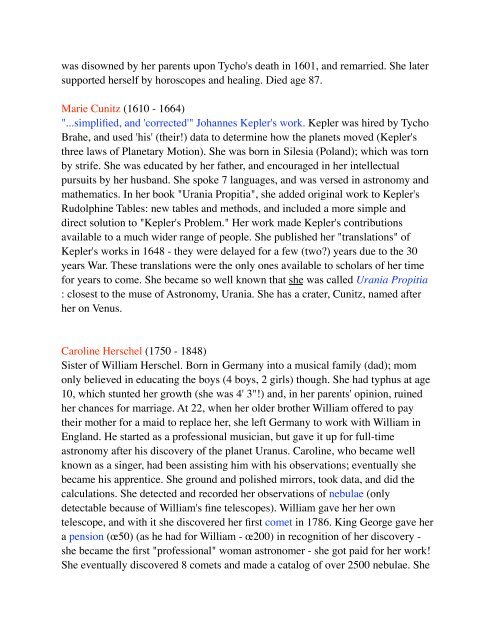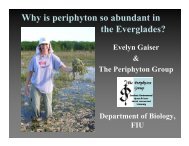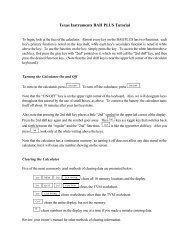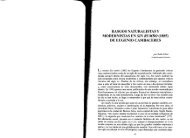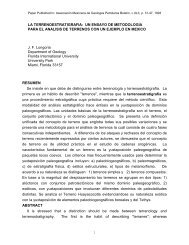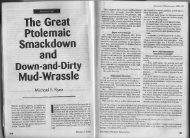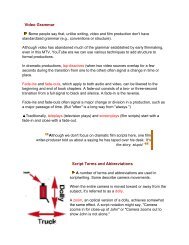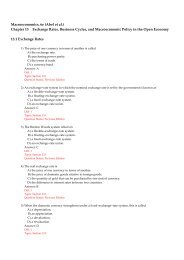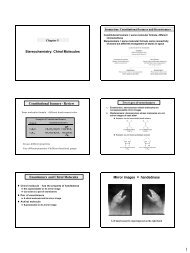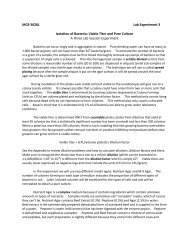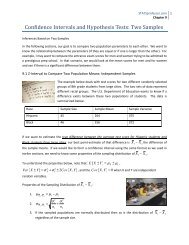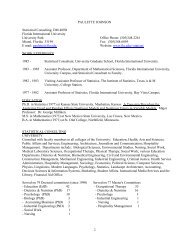Women in Astronomy En Hedu'Anna 2354 BC (Akkad/Sumer ...
Women in Astronomy En Hedu'Anna 2354 BC (Akkad/Sumer ...
Women in Astronomy En Hedu'Anna 2354 BC (Akkad/Sumer ...
You also want an ePaper? Increase the reach of your titles
YUMPU automatically turns print PDFs into web optimized ePapers that Google loves.
was disowned by her parents upon Tycho's death <strong>in</strong> 1601, and remarried. She later<br />
supported herself by horoscopes and heal<strong>in</strong>g. Died age 87.<br />
Marie Cunitz (1610 - 1664)<br />
"...simplified, and 'corrected'" Johannes Kepler's work. Kepler was hired by Tycho<br />
Brahe, and used 'his' (their!) data to determ<strong>in</strong>e how the planets moved (Kepler's<br />
three laws of Planetary Motion). She was born <strong>in</strong> Silesia (Poland); which was torn<br />
by strife. She was educated by her father, and encouraged <strong>in</strong> her <strong>in</strong>tellectual<br />
pursuits by her husband. She spoke 7 languages, and was versed <strong>in</strong> astronomy and<br />
mathematics. In her book "Urania Propitia", she added orig<strong>in</strong>al work to Kepler's<br />
Rudolph<strong>in</strong>e Tables: new tables and methods, and <strong>in</strong>cluded a more simple and<br />
direct solution to "Kepler's Problem." Her work made Kepler's contributions<br />
available to a much wider range of people. She published her "translations" of<br />
Kepler's works <strong>in</strong> 1648 - they were delayed for a few (two?) years due to the 30<br />
years War. These translations were the only ones available to scholars of her time<br />
for years to come. She became so well known that she was called Urania Propitia<br />
: closest to the muse of <strong>Astronomy</strong>, Urania. She has a crater, Cunitz, named after<br />
her on Venus.<br />
Carol<strong>in</strong>e Herschel (1750 - 1848)<br />
Sister of William Herschel. Born <strong>in</strong> Germany <strong>in</strong>to a musical family (dad); mom<br />
only believed <strong>in</strong> educat<strong>in</strong>g the boys (4 boys, 2 girls) though. She had typhus at age<br />
10, which stunted her growth (she was 4' 3"!) and, <strong>in</strong> her parents' op<strong>in</strong>ion, ru<strong>in</strong>ed<br />
her chances for marriage. At 22, when her older brother William offered to pay<br />
their mother for a maid to replace her, she left Germany to work with William <strong>in</strong><br />
<strong>En</strong>gland. He started as a professional musician, but gave it up for full-time<br />
astronomy after his discovery of the planet Uranus. Carol<strong>in</strong>e, who became well<br />
known as a s<strong>in</strong>ger, had been assist<strong>in</strong>g him with his observations; eventually she<br />
became his apprentice. She ground and polished mirrors, took data, and did the<br />
calculations. She detected and recorded her observations of nebulae (only<br />
detectable because of William's f<strong>in</strong>e telescopes). William gave her her own<br />
telescope, and with it she discovered her first comet <strong>in</strong> 1786. K<strong>in</strong>g George gave her<br />
a pension (œ50) (as he had for William - œ200) <strong>in</strong> recognition of her discovery -<br />
she became the first "professional" woman astronomer - she got paid for her work!<br />
She eventually discovered 8 comets and made a catalog of over 2500 nebulae. She


